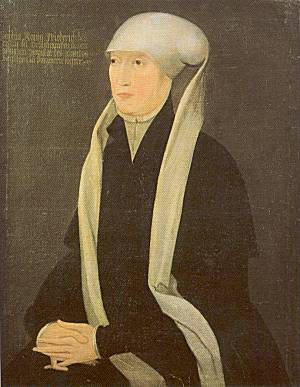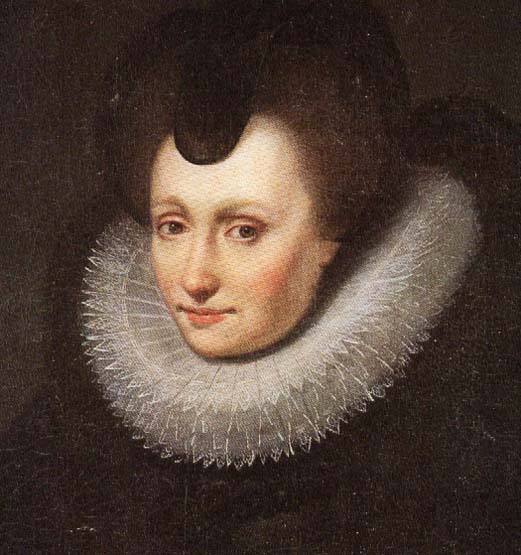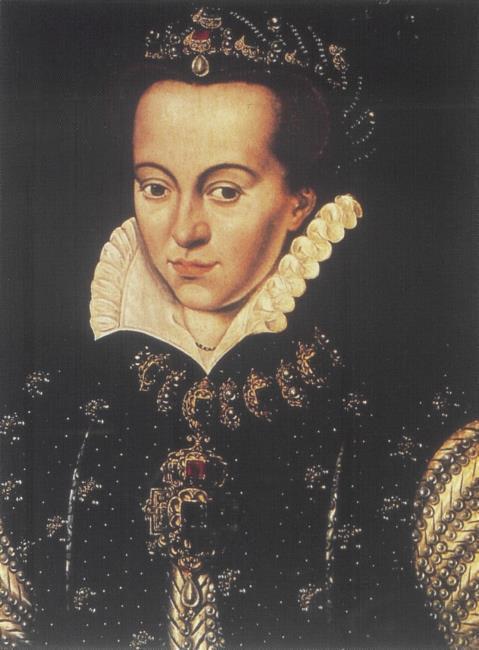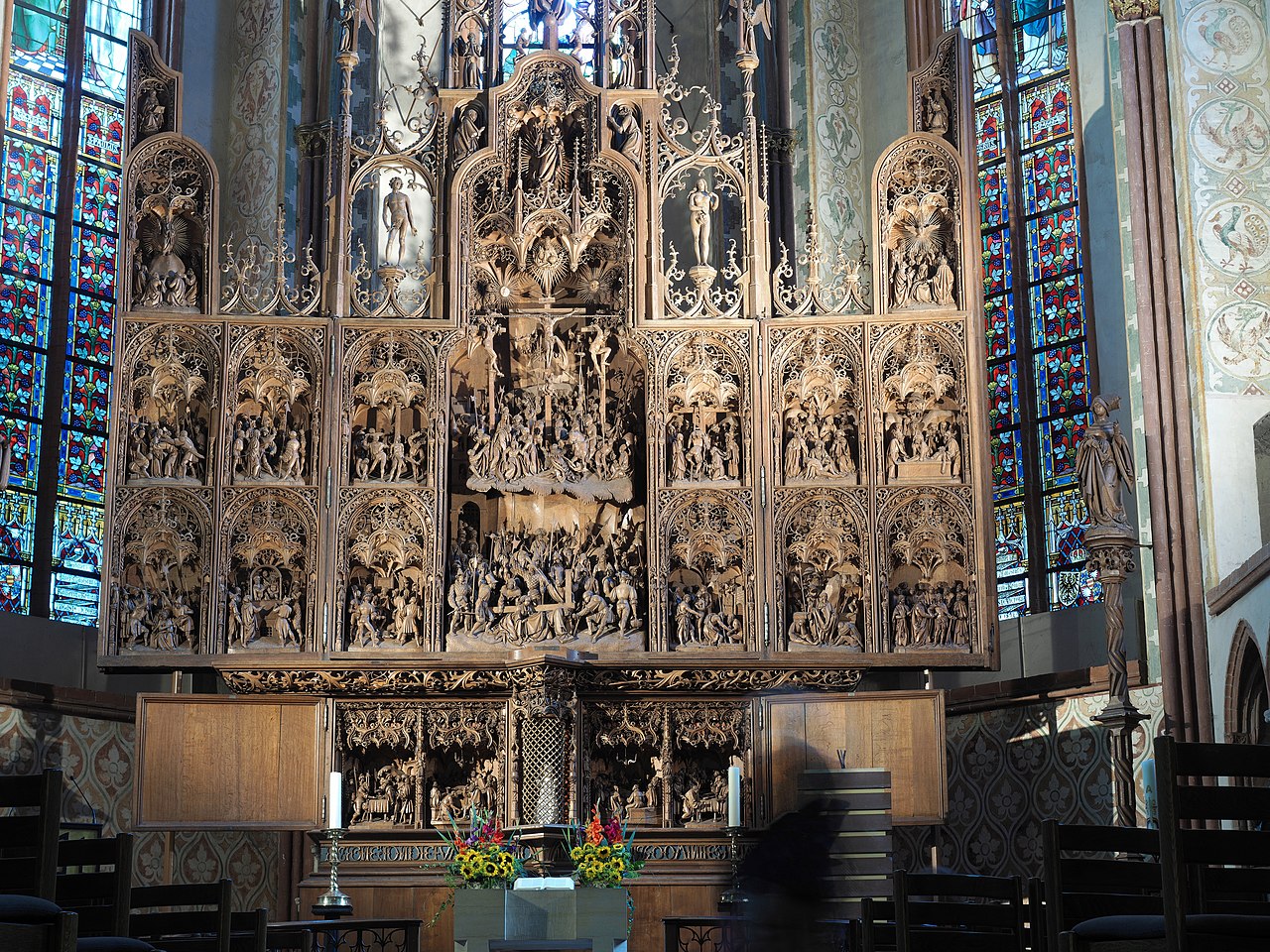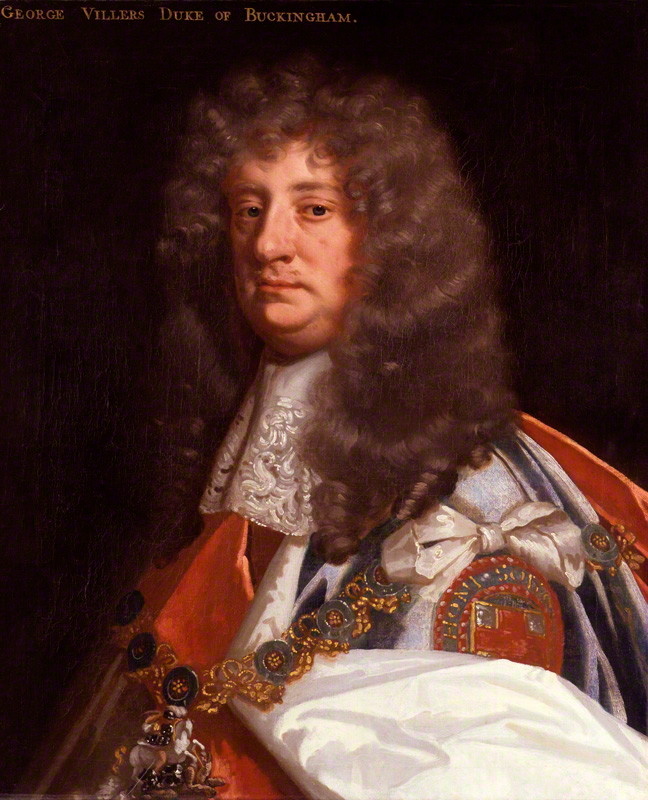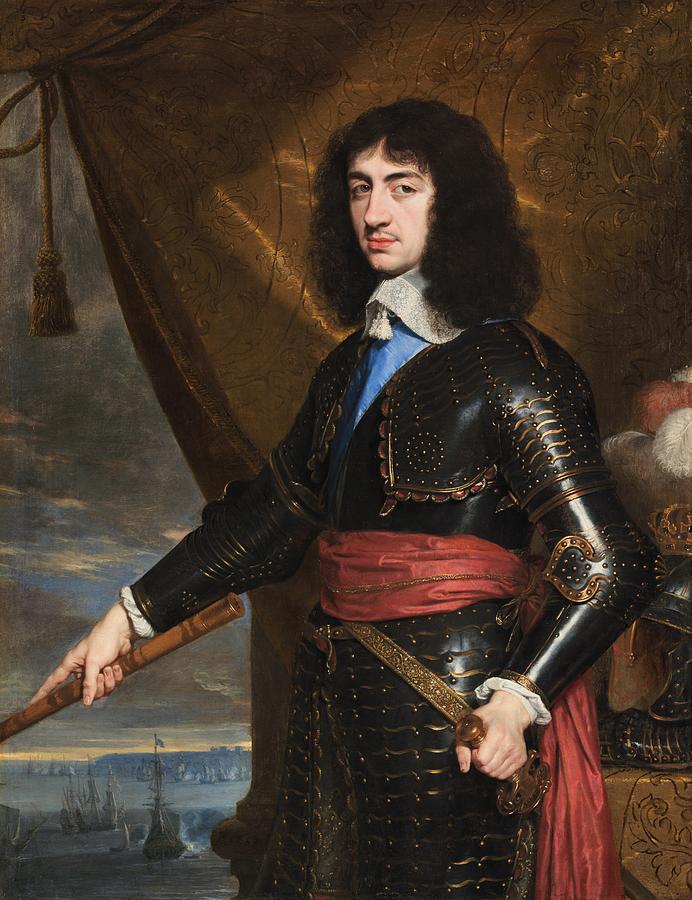by Susan Flantzer
© Unofficial Royalty 2021

Constance of Castile, Duchess of Lancaster; Credit – Wikipedia
Constance of Castile was the second wife of John of Gaunt, Duke of Lancaster, the fourth but the third surviving son of King Edward III of England and Philippa of Hainault. Through their daughter Catherine, Constance and John are the great-grandparents of Queen Isabella I of Castile and León and the great-great-grandparents of Isabella I’s daughter Catherine of Aragon, the first wife of King Henry VIII of England. Constance and John are the ancestors of all subsequent monarchs of the Kingdom of Castile and León and the united Kingdom of Spain.

Constance’s mother Maria de Padilla; Credit – Wikipedia
Born in 1354 at the Castle of Castrojeriz in Castrojeriz, Kingdom of Castile, now in Spain, Constance of Castile was the second of the three daughters and the second of the four children of Pedro I, King of Castile and the first of his three wives Maria de Padilla, a Castilian noblewoman who had been his mistress. They married in secret in 1353. Although Pedro was forced to repudiate his marriage with Maria de Padilla to marry Blanche of Bourbon (no children), their relationship continued until she died in 1361.
Constance had three siblings:
- Beatrice of Castile (1353 – 1369), a nun at the Abbey of Santa Clara at Tordesillas
- Isabella of Castile, Duchess of York (1355 – 1392), married Edmund of Langley, 1st Duke of York (brother of Constance’s husband John of Gaunt), had three children
- Alfonso, Prince of Asturias (1359 – 1362), died in childhood
Constance had had one brother from her father’s third marriage with Juana de Castro:
- Juan of Castile (1355 – 1405), married Elvira de Eril and Falces, had two children

Battle of Nájera during the Castilian Civil War; Credit – Wikipedia
Throughout the reign of Pedro I, King of Castile, the Castilian Civil War (1351 – 1369), a war of succession over the Kingdom of Castile, was fought between Pedro I and his half-brother Enrique, one of ten children of Pedro’s father King Alfonso XI of Castile and his long-time mistress Eleanor of Guzmán. In 1369, Pedro lost the civil war, his crown, and his life when he was stabbed to death by his half-brother who then succeeded to the throne as Enrique II, King of Castile. Constance was now a pretender to the throne of Castile and remained besieged in the Alcázar del Rey Don Pedro in Carmona for two more years until it was agreed that she could depart for territories of King Edward III of England now in present-day France.
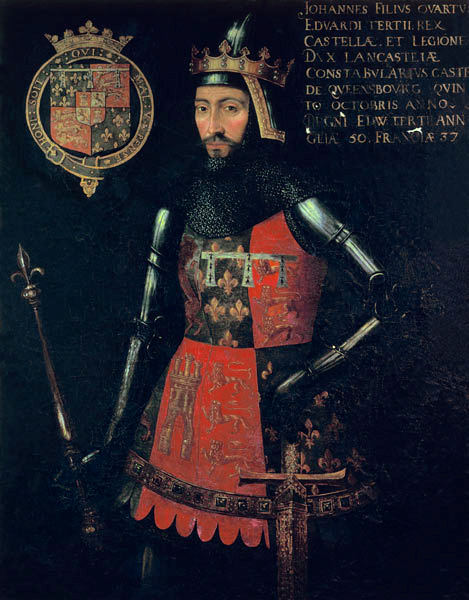
John of Gaunt, Duke of Lancaster; Credit – Wikipedia
On September 21, 1371, in English territory, at Roquefort near Bordeaux, Guienne (now in France), 31-year-old John of Gaunt, 1st Duke of Lancaster, King Edward III’s fourth but third surviving son, married 17-year-old Constance. This was John of Gaunt’s second marriage. His 23-year-old first wife Blanche of Lancaster, the wealthy heiress whose Duchy of Lancaster, to this day, is held in trust for the Sovereign to provide income for the use of the British monarch, died in 1368. Of John and Blanche’s seven children, three survived to adulthood including King Henry IV of England and Philippa of Lancaster who married King João I of Portugal.
Embed from Getty Images
The Savoy Palace, the London home of John of Gaunt
The marriage of Constance and John was a calculated plan for England to gain control of the Kingdom of Castile. After his marriage to Constance, John assumed the style of King of Castile in the right of his wife. On February 9, 1372, Constance made a ceremonial entry into London as the Queen of Castile, accompanied by John’s eldest brother, Edward (the Black Prince), Prince of Wales, along with an impressive escort of English and Castilian retainers and London dignitaries. Crowds lined the streets to see Constance as she traveled to Savoy Palace, the London residence of John of Gaunt, where she was ceremonially received by her husband.
Constance’s younger sister Isabella of Castile accompanied her to England. On July 11, 1372, Isabella married John of Gaunt’s younger brother, Edmund of Langley, 1st Duke of York as part of a dynastic alliance to further the English claim to the crown of Castile.
Constance and John of Gaunt had two children but only one survived infancy:
- Catherine of Lancaster (1373 – 1418), married King Enrique III of Castile, had three children including King Juan II of Castile
- John of Lancaster (1374 – 1375), died in infancy
The English were never able to gain control of the Kingdom of Castile. In 1388, under the Treaty of Bayonne, John of Gaunt and his wife Constance of Castile renounced any claim to the throne of Castile in favor of King Enrique III of Castile, the grandson of Constance’s half-uncle King Enrique II of Castile who had taken the throne from Constance’s father King Pedro I of Castile. The treaty further stipulated that King Enrique III of Castile should marry his second cousin Catherine of Lancaster, John and Constance’s daughter and the granddaughter of King Pedro I, thereby uniting the two opposing factions of the family. Also included in the treaty was the creation of the title Prince of Asturias as the title of the heir to the throne of Castile. Today Prince or Princess of Asturias is the title used by the heir apparent or heir presumptive to the throne of Spain.
Soon after King Edward III of England founded the Order of the Garter in 1348, women were appointed Ladies of the Garter but were not made companions. In 1378, Constance received the honor of being appointed the fourth Lady of the Garter.
Constance of Castile, Duchess of Lancaster died on March 24, 1394, aged 39 or 40, at Leicester Castle in Leicestershire, England. She was buried at the Church of the Annunciation of Our Lady of the Newarke, in Leicester, England, which was destroyed in the mid-16th century under the Dissolution of the Chantries Act during the reign of King Edward VI of England. In 1396, Constance’s widower John of Gaunt married his long-time mistress, Katherine Swynford, with whom he already had four children. John survived Constance by five years, dying on February 3, 1399, aged 58, at Leicester Castle in Leicestershire, England. He was buried with his first wife Blanche of Lancaster in a magnificent tomb at Old St. Paul’s Cathedral in London, England which was destroyed in the Great Fire of London of 1666.
Works Cited
- En.wikipedia.org. 2021. Constance of Castile, Duchess of Lancaster – Wikipedia. [online] Available at: <https://en.wikipedia.org/wiki/Constance_of_Castile,_Duchess_of_Lancaster> [Accessed 1 April 2021].
- En.wikipedia.org. 2021. Peter of Castile – Wikipedia. [online] Available at: <https://en.wikipedia.org/wiki/Peter_of_Castile> [Accessed 1 April 2021].
- Es.wikipedia.org. 2021. Constanza de Castilla (1354-1394) – Wikipedia, la enciclopedia libre. [online] Available at: <https://es.wikipedia.org/wiki/Constanza_de_Castilla_(1354-1394)> [Accessed 1 April 2021].
- Flantzer, Susan, 2021. John of Gaunt, 1st Duke of Lancaster. [online] Unofficial Royalty. Available at: <https://www.unofficialroyalty.com/john-of-gaunt-1st-duke-of-lancaster/> [Accessed 1 April 2021].
- Ru.wikipedia.org. 2021. Констанция Кастильская, герцогиня Ланкастер — Википедия. [online] Available at: <https://ru.wikipedia.org/wiki/%D0%9A%D0%BE%D0%BD%D1%81%D1%82%D0%B0%D0%BD%D1%86%D0%B8%D1%8F_%D0%9A%D0%B0%D1%81%D1%82%D0%B8%D0%BB%D1%8C%D1%81%D0%BA%D0%B0%D1%8F,_%D0%B3%D0%B5%D1%80%D1%86%D0%BE%D0%B3%D0%B8%D0%BD%D1%8F_%D0%9B%D0%B0%D0%BD%D0%BA%D0%B0%D1%81%D1%82%D0%B5%D1%80> [Accessed 1 April 2021].
This article is the intellectual property of Unofficial Royalty and is NOT TO BE COPIED, EDITED, OR POSTED IN ANY FORM ON ANOTHER WEBSITE under any circumstances. It is permissible to use a link that directs to Unofficial Royalty.

